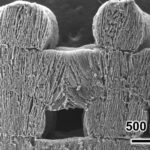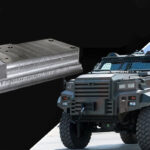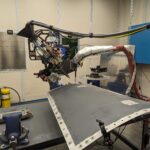Researchers at the University of Wisconsin–Madison have made progress in in-space manufacturing by successfully 3D printing RAM device units in “zero gravity”. The team conducted their experiments in March 2024 on a parabolic test flight from Fort Lauderdale-Hollywood International Airport. NASA, which funds this research, aims to develop in-space manufacturing capabilities for electronic components, such as semiconductors, actuators, and sensors, to support future deep-space missions.

Traditional 3D printing relies on gravity, posing significant challenges in a so-called zero-gravity environment. The UW–Madison team, led by Assistant Professor Hantang Qin, developed an alternative: electrohydrodynamic (EHD) printing. EHD printing uses electrical force to push liquid material through a nozzle only 30 micrometers in diameter, effectively overcoming surface tension that would otherwise prevent the material from flowing.
During the initial test flights, the team faced calibration issues caused by the plane’s engine vibrations. They resolved this by rewriting the system’s code, allowing successful printing on their final flight. Under manual control, the EHD printer produced over a dozen units using zinc oxide, a semiconducting ink, and several more with polydimethylsiloxane, an insulating polymer ink.
Post-flight analysis in a makeshift lab confirmed the printer’s success on a micro- and nanoscale level. The team plans additional test flights in August and November 2024, aiming to integrate their EHD technology into an industry partner’s multi-tool 3D printer. Future goals include progressing from printing individual units to complete semiconducting devices and ultimately testing their technology aboard the International Space Station. Achieving these milestones will mark significant progress toward sustainable and autonomous in-space manufacturing capabilities.
Source: wisc.edu










